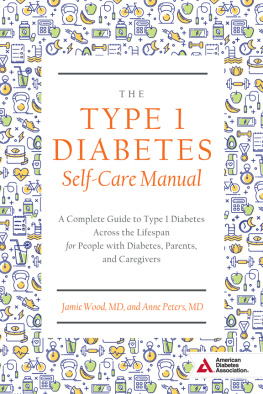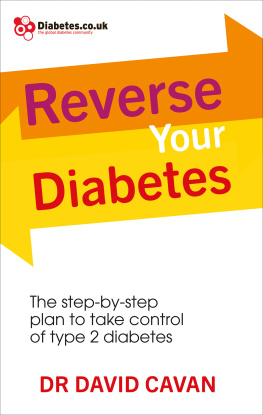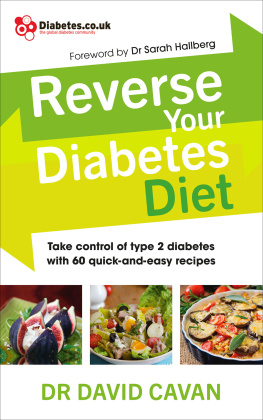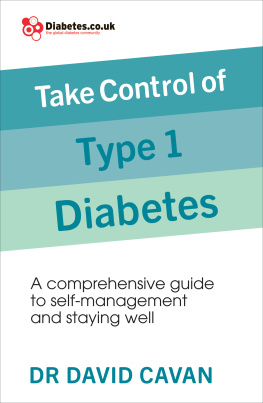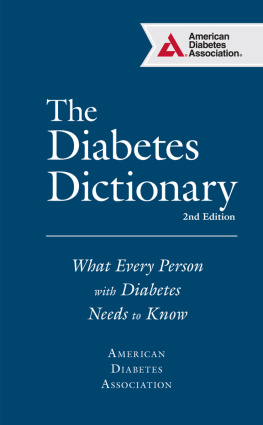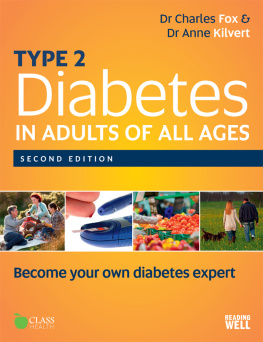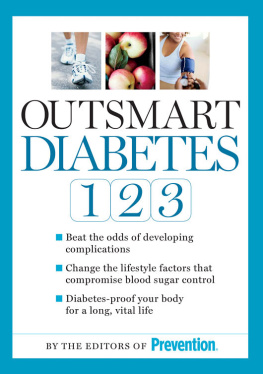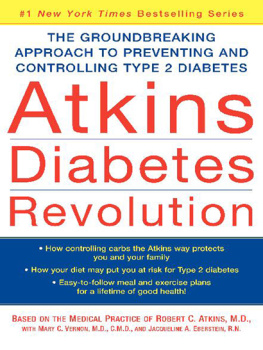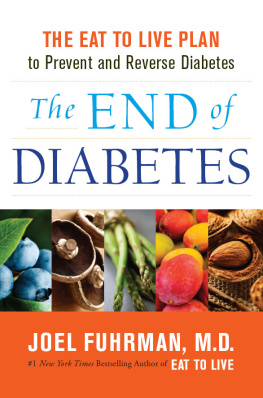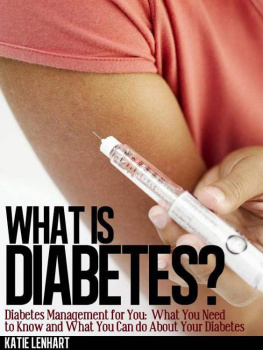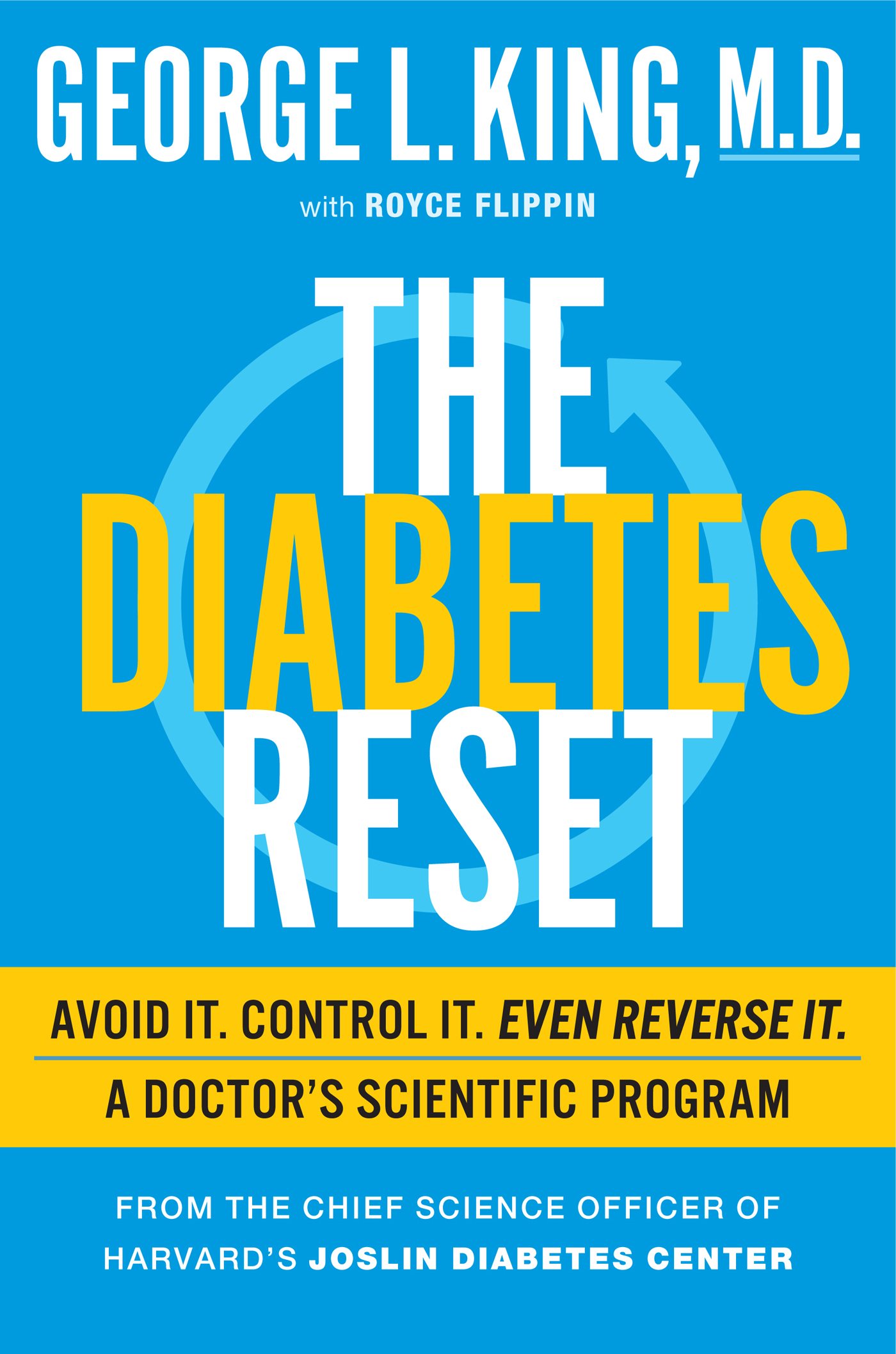The
Diabetes
Reset
Avoid It. Control It. Even Reverse It.
A Doctors Scientific Program
George L. King, M.D.
with Royce Flippin
Workman Publishing New York
I dedicate this book to my wife, Diana, and my sons, Benjamin and Adam, for their lifetime of support. I also want to express my appreciation to all the investigators, health providers, and patients with diabetes at Joslin Diabetes Center and everywhere for their passion and hard work in managing this disease.
Contents
Acknowledgments
I would like to thank my literary agent, Katherine Cowles, who had the original vision for this book, and without whom The Diabetes Reset would not have been written. I also want to thank my assistants, Daad Abraham and Karen Lau, for their extensive efforts in the research and writing of this book. In addition, I am grateful to the Joslin researchers and clinicians who generously shared their time and expertise, and to the administrators at Joslin for their support of this project. Finally, I offer my special thanks to Royce Flippin, my collaborator on this project, and to the editors and production team at Workman Publishing, especially Mary Ellen ONeill, for their fine work in bringing this book to publication.
(Note: Dr. King will be donating 50% of his proceeds from The Diabetes Reset to the Joslin Medalist Study and Joslins Asian American Diabetes Institute.)
Introduction:
The Diabetes Reset Promise
If youre reading this book, its very likely that you or someone close to you is struggling with blood glucose levels. It could be that your fasting blood glucose level was higher than it should have been at your last checkupperhaps in the prediabetes range of 100 to 125 mg/dL (milligrams per deciliter), indicating you have impaired glucose tolerance and are at high risk of developing diabetes. Your fasting blood glucose may even be more than 125 mg/dL, which is considered the threshold for type 2 diabetes.
You may also have gotten test results showing that your hemoglobin A1C levels, which measure your average blood glucose over the past several months, are elevatedmeaning they were either between 5.7% and 6.4%, the range for prediabetes, or 6.5% or higher, signaling that you may actually have diabetes.
Learning that your blood glucose levels are too high can be bewildering, even frightening. Because both type 2 diabetes and its precursor, prediabetes, tend to develop slowly over many years, its tempting to think that once youve been diagnosed with one of these conditions, theres not much you can do except take diabetes medication and hope for the best. As a lifelong diabetes researcher, however, I want to assure you that nothing could be further from the truth. In reality, you can always take steps to improve your bodys response to insulin and reset your ability to metabolize the glucose in your bloodstarting today.
This simple statement has profound implications. It means that if you have prediabetes, not only can you prevent your condition from progressing to diabetes, but in many cases you can actually reverse course and bring your glucose metabolism back to normal. Even if youve already been diagnosed with type 2 diabetes, you can still significantly improve your bodys natural glucose metabolism and dramatically reduceand in some cases even eliminateyour need for metformin, synthetic insulin, or other diabetes drugs.
The promise of The Diabetes Reset is equally simple: If you follow the evidence-based approaches in this book, you will begin seeing immediate improvements in your bodys ability to metabolize blood glucoseimprovements that will continue to grow over time. At the same time, you will also see remarkable improvements in your overall health. In addition to becoming lighter and fitter, you will find yourself eating the types of foods that human beings have thrived on for thousands of years. Youll also sleep better at night, experience less stress during the day, and have a more balanced immune system that fights off illness without overreacting. And because impaired blood glucose control is a major risk factor for cardiovascular disease, you will be taking a major step toward improved heart health as well.
The Diabetes Reset: Not for Type 2 Diabetes Only!
Although the diabetes-control strategies in The Diabetes Reset have been written primarily for people with prediabetes or type 2 diabetes, they will also benefit people with type 1 diabetes and pregnant women who may be at risk of gestational diabetes. By using these approaches to increase insulin sensitivity, type 1 diabetics can enhance their glucose control and also reduce the amount of insulin medication they require, which in turn will make it easier to control their weight. At the same time, the recommendations contained in this book will enhance their overall health and reduce risk of vascular complications. Similarly, pregnant women can use these approaches to reduce the risk of developing gestational diabetes.
Glucose and the Goldilocks Principle
There are only 4 grams of glucosejust enough to fill a teaspooncirculating at any given time in the bloodstream of an average-weight person. But keeping that small amount of glucose constant is vitally important to your health. When it comes to your blood glucose level, the Goldilocks principle holdsyou want it to be in the just right range, no lower than 70 mg/dL and no higher than 100 mg/dL when you wake up in the morning, and no higher than 140 gm/dL one to two hours after eating a meal. Normally, your body is programmed to keep glucose safely within this range. When glucose levels rise, the body automatically produces more insulin to speed the absorption of this glucose into the bodys tissues. When glucose levels dip toward the lower end of this range, the liver releases stored glucose into the bloodstream, while the pancreas stops producing insulin and may instead secrete glucagon, a hormone that induces the liver to manufacture still more glucose.
If this system falters and you become hyperglycemic, meaning that your blood glucose levels are consistently elevated, this excess glucose will begin attacking your nerve endings and the walls of your blood vessels. Over time, this can lead to neurological problems, damage to the eyes, kidneys, inner ear, and other organs, and increased risk of heart attack and stroke. Although these complications are typically associated with diabetesdefined as a fasting blood glucose of 126 mg/dL or higher or a postmeal glucose level of 200 mg/dL or abovepeople with prediabetes (a 100 mg/dL to 125 mg/dL fasting glucose level, or 140 mg/dL to 200 mg/dL following a meal) can also be at increased risk for these conditions.
If blood glucose levels fall too low, on the other hand, a condition known as hypoglycemia, your health can also suffer. Because the brain relies completely on blood glucose for fuel, and requires a lot of it (when youre in a sedentary fasting state, your brain consumes a whopping 60% of your total blood glucose supply), it is quickly affected by low glucose levels. People typically begin noticing the mental effects of low blood sugar as their glucose levels drop below 70 mg/dL. These may include feelings of irritability, anxiety, and difficulty concentrating. Low blood sugar can also cause headaches, fatigue, blurred vision, sweating, an elevated heartbeat, tremors, and hunger pangs. If glucose levels drop further still, it can lead to fainting, seizures, coma, and even death. People who take insulin medication for type 1 or type 2 diabetes are at particular risk for low blood glucose because injected insulin can push glucose levels too low if its administered at the wrong time or in the wrong dose.


